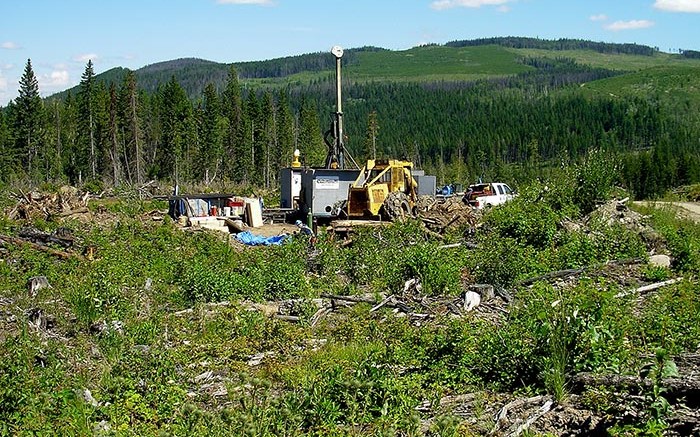VANCOUVER — It’s been a journey of discovery and growth for partners Consolidated Woodjam Copper (TSXV: WCC) and Gold Fields (NYSE: GFI) at their Woodjam copper-gold-molybdenum porphyry deposit, 45 km east of Williams Lake, B.C., but now Gold Fields is departing.
The gold mining giant is returning its 51% interest in the property to the junior explorer in exchange for 12.3 million shares, or 19.9% of Consolidated Woodjam, and an underlying royalty on the property.
Glen Garratt, vice-president, secretary and a director of Consolidated Woodjam, tells The Northern Miner the company is “thrilled” to have the property back into full ownership.
“Everything goes full circle in life, and we’re at that special time in the cycle when a junior company can pick up a substantial asset and take advantage of being at the bottom of a market,” he says.
Gold Fields picked up an option on the greenfield discovery in 2009, enticed by a 2008 discovery drill hole intercept of 200.8 metres at 1% copper and 0.44 gram gold in the property’s Southeast zone.
The Southeast zone is one of six highly prospective porphyry targets clustered across a 5 km diameter. The other targets are Megabuck, Deerhorn, Takom, Megaton and Three Firs.
The global miner spent the first year running geophysical surveys across the property, plus geological mapping, whole rock geochemistry and petrographic analysis. It then settled into advanced exploration drilling and earned its 51% interest.
Drilling at the Southeast zone outlined a 227.5-million-tonne inferred resource grading 0.3% copper for 1.54 billion contained lb. copper. Gold and molybdenum occur sporadically through the deposit but are not part of the resource calcualtion.
“Big companies require at least 500 million tonnes to drive the economics, and although Woodjam shows substantial economic power, it’s just not big enough yet for them — but it’s seriously close,” Garratt says.
He adds there’s “plenty of opportunity to double the size of the deposit,” and points to an undefined induced-polarization (IP) anomaly — a geophysical response to mineralization at Woodjam — that trends for 1.3 km from the southeast zone to a nearby property boundary.
“Strong companies can be built on a project like this,” he says. “Look at Noranda and Placer Dome as examples — they all got their start by developing smaller mines, and a project like Woodjam would’ve been attractive for them.”
He argues the mid-tier companies grew by taking the biggest exploration risk in the industry, but over his career, he’s watched many of them assimilate into larger companies and get “lost forever.”
He says that “now we mostly have three or four giant companies that require assets to show up on their books in a substantial way. So what our industry is lacking in markets like these are those entrepreneurial mid-tier companies who recognize the value of these projects, and want to grow their wealth from smaller operations that have great upside potential.”
By the time Gold Fields wrapped up programs at Woodjam in 2013, Garratt says its partner had spent almost $27 million dollars on the property.
Inferred resource estimates were also calculated for the Deerhorn and Takom zones, which returned 32.8 million tonnes at 0.49 gram gold and 0.2% copper for 516,200 oz. gold and 158.2 million lb. copper, and 8.3 million tonnes at 0.26 gram gold and 0.2% copper for 68,200 oz. gold and 39.7 million lb. copper.
“It really takes a major to bring a property like this along — they’re expensive,” he adds.
Garratt says the next step for Consolidated Woodjam is to raise capital until early next year, with the proceeds going towards IP surveys and target evaluation.
“There are several new areas ready for drill testing, and zones such as Deerhorn are open for expansion,” he says. “The discovery potential here is huge, so we expect a good deal more excitement at Woodjam.”
The company also hopes to drill an untested 2.5 km long IP anomaly, similar in size and habit to the one that helped the greenfield experts discover the Southeast zone.
“We live by the old saying that ‘you don’t fight against the market’,” he says. “Those of us who have lived through these cycles know that one day it’ll just suddenly take off — it’s hardly predictable. And when the market turns, we’re going to be a junior sitting here with a major deposit and exciting potential.”
Consolidated Woodjam shares have traded within a 52-week range of 2¢ to 9¢, and last closed at 5¢. The company has 52.3 million shares outstanding for a 3.2-million market capitalization.


Be the first to comment on "Woodjam property reverts to Cons. Woodjam Copper"